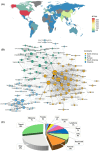Minimally invasive biopsy-based diagnostics in support of precision cancer medicine
- PMID: 38519839
- PMCID: PMC11547246
- DOI: 10.1002/1878-0261.13640
Minimally invasive biopsy-based diagnostics in support of precision cancer medicine
Abstract
Precision cancer medicine (PCM) to support the treatment of solid tumors requires minimally invasive diagnostics. Here, we describe the development of fine-needle aspiration biopsy-based (FNA) molecular cytology which will be increasingly important in diagnostics and adaptive treatment. We provide support for FNA-based molecular cytology having a significant potential to replace core needle biopsy (CNB) as a patient-friendly potent technique for tumor sampling for various tumor types. This is not only because CNB is a more traumatic procedure and may be associated with more complications compared to FNA-based sampling, but also due to the recently developed molecular methods used with FNA. Recent studies show that image-guided FNA in combination with ultrasensitive molecular methods also offers opportunities for characterization of the tumor microenvironment which can aid therapeutic decisions. Here we provide arguments for an increased implementation of molecular FNA-based sampling as a patient-friendly diagnostic method, which may, due to its repeatability, facilitate regular sampling that is needed during different treatment lines, to provide tumor information, supporting treatment decisions, shortening lead times in healthcare, and benefit healthcare economics.
Keywords: biomarkers; fine‐needle aspirates; immune signaling; minimally invasive diagnostics; solid tumors; tumor microenvironment.
© 2024 The Authors. Molecular Oncology published by John Wiley & Sons Ltd on behalf of Federation of European Biochemical Societies.
Conflict of interest statement
The authors declare no conflict of interest.
Figures

References
-
- Schnitt SJ. Problematic issues in breast core needle biopsies. Mod Pathol. 2019;32(Suppl 1):71–76. - PubMed
-
- Tani E, Fuentes‐Martinez N, Skoog L. A review of the use of fine‐needle aspiration biopsy of mammary tumors for diagnosis and research. Acta Cytol. 2017;61(4–5):305–315. - PubMed
-
- Roy‐Chowdhuri S, Chen H, Singh RR, Krishnamurthy S, Patel KP, Routbort MJ, et al. Concurrent fine needle aspirations and core needle biopsies: a comparative study of substrates for next‐generation sequencing in solid organ malignancies. Mod Pathol. 2017;30(4):499–508. - PubMed
Publication types
MeSH terms
Grants and funding
LinkOut - more resources
Full Text Sources
Medical

